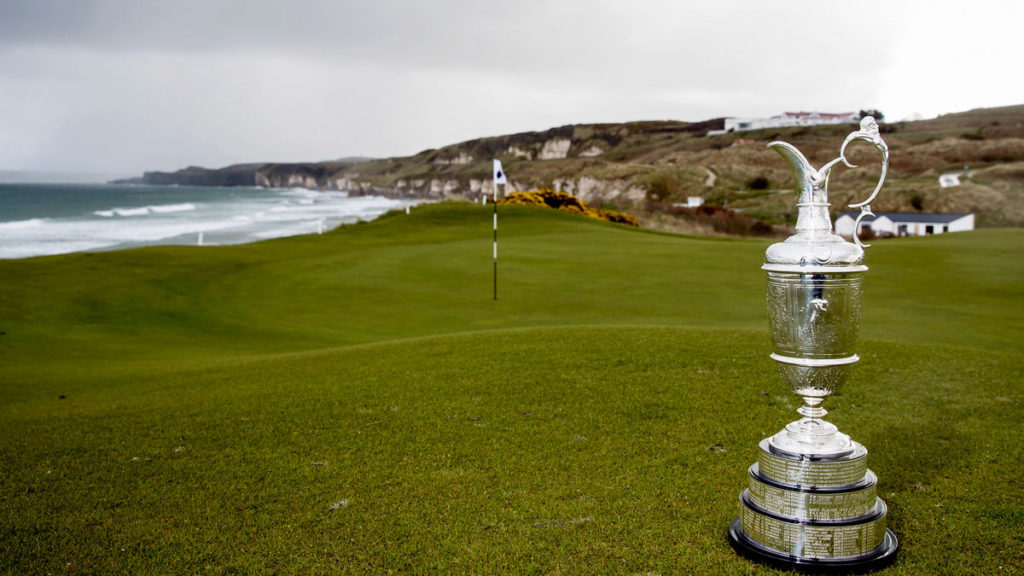The final major championship for the 2019 calendar is one that’s been eagerly awaited for quite some time. Returning to Northern Ireland for just the second time since 1951, Royal Portrush Golf Club will serve as ground zero as the world’s best players vie for possession of the famed Claret Jug.
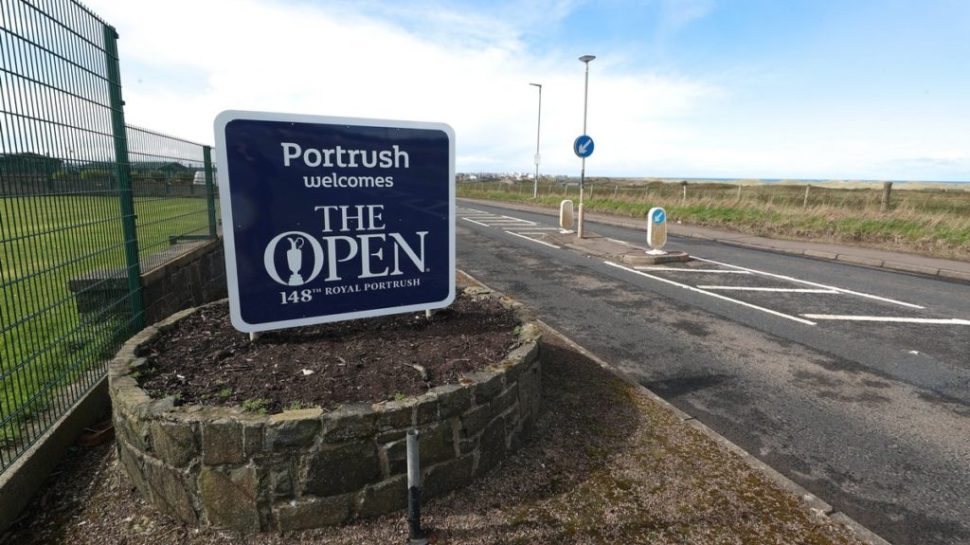
The par-71, 7,344 yards long Dunluce Links is consistently rated among the world’s finest courses and the layout encompasses a wide array of land movements. Dunes flank a number of fairways and the ever present penalizing rough looks to gobble the stray play. One must also mention the ever shifting winds where velocities can range from zephyr to gale force. And the renowned fickle weather which can be pleasant at one moment and literally lash against one’s face when storm clouds make their presence known to all.
The Dunluce Links / Championship Course was modified by architect Martin Ebert with two new holes added — the par-5 7th and par-4 8th. These holes replace the former 17th and 18th holes — which were not considered integral to the design and were also needed for the related mega-sized Open Championship village.
Four of golf’s most knowledgeable architects were contacted to provide their thoughts — including the aforementioned Ebert. The events that take place at Royal Portrush this week will add another glorious chapter to the game’s oldest major — The Open Championship.
Links golf at its finest – Royal Portrush ⛳️ Who will overcome the elements next month? 🌊💨 pic.twitter.com/cXiDhICTQc
— The Open (@TheOpen) 28 June 2019
The Participants
Martin Ebert
The Director of Mackenzie & Ebert, Martin Ebert has advised seven of the ten Open championship venues. This includes the design work for the changes to the Ailsa Course at Turnberry before the 2009 Open and the more recent redesign to the course and the changes, including two new holes, at Royal Portrush. Currently working on existing course projects in many parts of the world including the UK, Ireland, Canada, Spain, Japan, Peru, Chile, Argentina and Japan.

Ally McIntosh
A Scotsman who grew up on the links. After relocating to Ireland and graduating through the EIGCA education program, he set up his own golf course design firm in 2010 and has since been fortunate enough to design and work on well-known seaside courses in both his home and adopted countries. He plays most of his golf at Portmarnock in Dublin.

Tom Mackenzie
Tom Mackenzie has been a golf course architect for 30 years now and is a partner of Mackenzie & Ebert although not directly involved with the Portrush project. He has been a member of Royal Dornoch since he was 16 years old — more than 30 years — and understands links golf in all conditions. He has worked on many of the top links throughout Great Britain & Ireland.

Jeff Lynch
Jeff Lynch, Director (re)GOLF, has been involved in golf course design & construction since his early years, Practicing as a professional architect for the past 18 with his fellow architects @regolfdesign, Lynch is committed to the game, the culture, and the environment.

***
It’s a rare event when an Open host site is one not used for many, many years as Royal Portrush has the game’s oldest major return to Northern Ireland for the first time since 1951. How do you see the course performing against the world’s best players?
EBERT: Scoring and the test of golf will depend on the weather experienced. In light wind conditions, the players are likely to be able to score well as Portrush has received a lot of rain in the run up to the event. Whatever the conditions, the course will provide a great test of ball striking.
LYNCH: Like most links layouts, the wind is a major factor in defending the course, if the conditions are soft and there is no wind, these guys are so good they will probably shoot low scores. The open is played in July and the prevailing winds are usually fairly calm — but it is the Atlantic coast this time.
MACKENZIE: It will be a spectacular event on a great course. As always, it depends upon the weather – level par could win or 12 under.
MCINTOSH: Hard to tell. It’s certainly not one of the longest Open courses but the R&A have become quite good at finding the right balance between difficulty and playability. Even for every day play the fairways at Portrush can be quite tight, especially on some of the sharper doglegs. I’ll go with a winning score of -14.
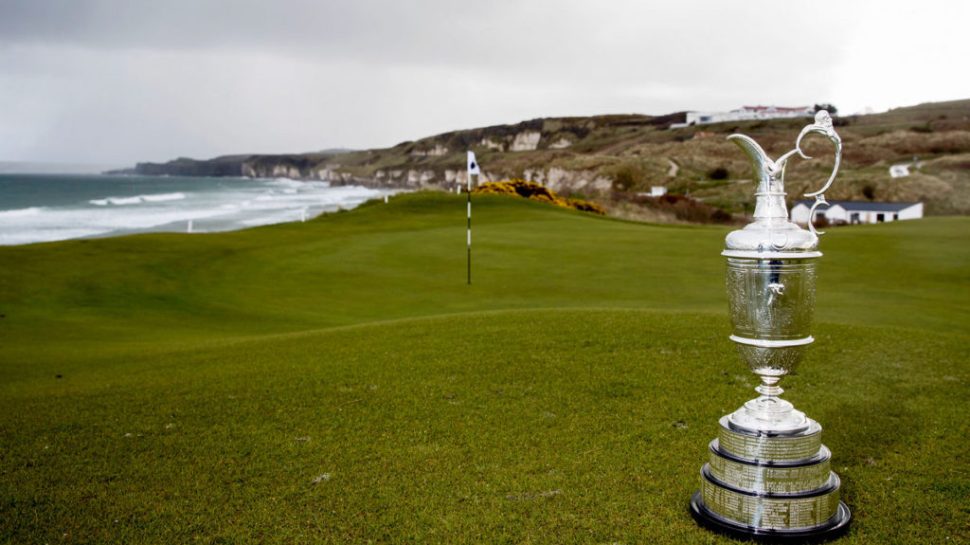
Among the four major championships — would you say that The Open, and its reliance on using links layouts, stands above the other three events?
MCINTOSH: Yes – but then my love of links golf is deep rooted so there is no contest. In truth, three of the majors all have their own unique identity. Only the PGA struggles in that respect although I thought the earlier slot in the calendar this year helped it.
LYNCH: I think links is the ultimate test in golf, you need to be able to flight the ball, high, low, left, right, bump and run and be creative. All the modern gadgets in the world will not help you feel a shot into a green with a 17mph wind blowing through your ears. It sometimes brings the game back to a simpler form, of man / woman– versus the land and the elements, It test all facets of the game physically and mentally, especially if you are out of position! I haven’t watched too many boring Open Championship’s.
MACKENZIE: As a Brit, I am perhaps biased, but yes, without a doubt. The Open consistently delivers good watching on different courses. Can that be said of the US Open or the PGA? Augusta is the same venue every year, but always entertaining.
EBERT: It does for me as the game is three dimensional on a links course. The run of the ball as well as the flight of the ball must be judged. That is not always the case at the other three majors.
What makes the Dunluce Course standout?
LYNCH: If you said to me, would you like a fourball in Portrush in the morning — tools would be downed immediately and the family abandoned. Having played there several times, I still love going back, it is one of the finest links on our shores, a classic mix of strategy, vista, Drama and history –the Guinness is not too bad either.
EBERT: Its most beautiful setting and the detail of the design of the greens and green surrounds.
MACKENZIE: Its greens and green surrounds. They are a masterpiece – perhaps Harry Colt’s finest achievement.
MCINTOSH: Like so many Colt courses, there is an elegance to Portrush in the way it is routed and detailed. I love the topography as it provides the perfect amount of ground contour and undulation to produce an easy walking round whilst serving up a variety of individual holes, some of the best in the country. What really makes the course standout, however, are the green complexes, mainly built rather than found but shaped exquisitely.
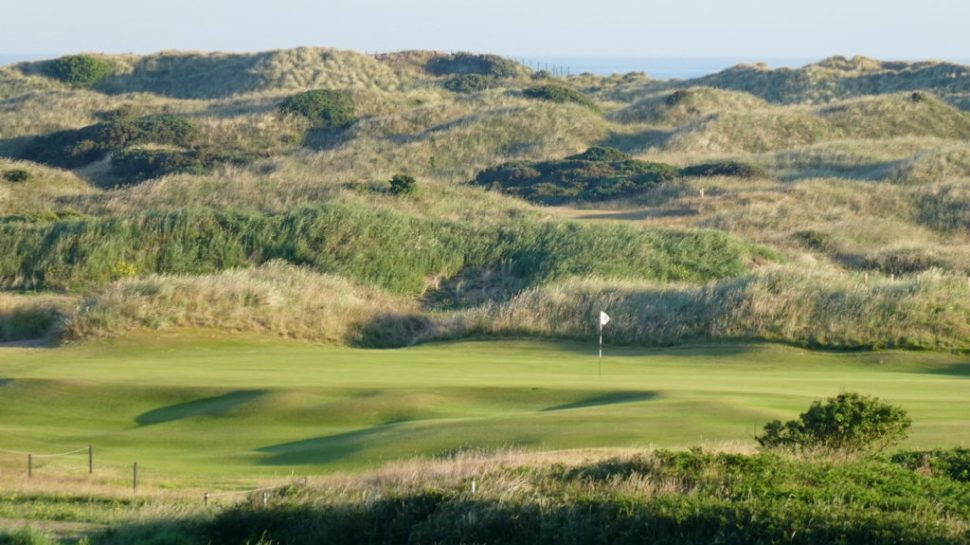
Give your assessment of the two new holes now included in the 18-hole layout.
EBERT: I have to be careful here as I designed them but I hope that players and spectators will think that they are very natural even though we had to create both holes, albeit on a wonderful piece of terrain overall. As a result of the great land they are located on, I think they are far superior to the old 17th and 18th holes they are replacing.
MCINTOSH: At present, there are more alterations than strictly necessary being carried out on our championship links courses but in the case of Portrush, I liked the proposed changes from the start. By using part of the old Valley course, the two new holes add another element to the Dunluce, keeping the course nearer the sea and bringing in more variation in elevation without making it too hard on the legs. A strong par-5 was needed and the returning 4 plays along great ground on the ridge line. Those who bemoan the loss to the Valley eighteen are off the mark as the replacements on that course are also a good addition.
LYNCH: Unfortunately, I haven’t got a chance to get up and see these holes on the ground, I know they have been constructed in the more dramatic dunes scape area of the site, these corridors alone are pretty awesome if you just put flags in them, I am sure they will be a wonderful addition, I am looking forward to seeing them perform during the Open.
MACKENZIE: They were essential to allow the Open to return to Portrush, but they are unquestionably much stronger holes than the old 17th and 18th which were not stand-out holes. The new holes are.
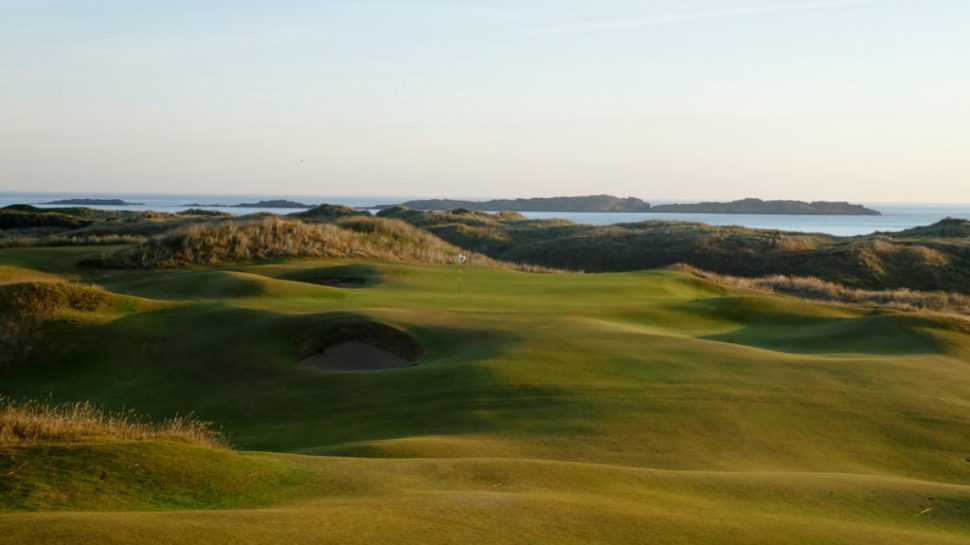
How much of an advantage is there for players familiar with the course as opposed to those who have never been on the grounds such as Brooks Koepka, Tiger Woods and a host of others?
MACKENZIE: That rather depends upon the weather. If it is reasonably calm then I am not sure it will make a huge difference.
EBERT: I think that this will be a big advantage although Bruce Koepka’s caddie is a Portrush man so that will help him enormously.
LYNCH:The guys who are familiar with the course have the added pressure of being the local favorite, this alone might balance the scales. I think with the use of the green sheets for putting and a good caddie the playing field is pretty level. Most of the top pros will have their homework done.. There is a lot at stake. As I mentioned above, Wind will play a huge factor and knowing where to miss, this could be a slight advantage for the local guys.
MCINTOSH: Every great course rewards players the more they become familiar with it, great links courses especially as the yardage book can be thrown out the window. Portrush offers up its fair share of speed slots, dogleg carries, strategically placed bunkers and slopes that can be learnt and utilized so there should be a definite advantage to be had.
